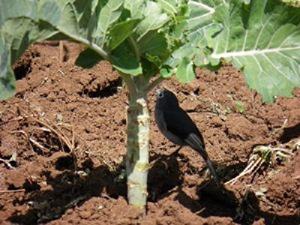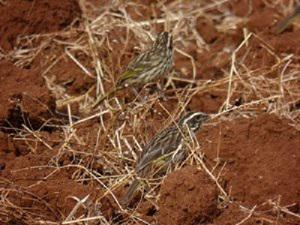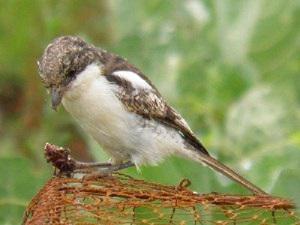Paul Kariuki Ndang'ang'a
The aim of the project is to use birds to influence the landscape composition on occurrence of natural pest enemies and post-dispersal weed predators will be investigated in the agricultural areas of Kinangop Plateau. Further, awareness will be raised on ways of enhancing landscape-driven natural pest and weed suppression.

Slaty White-eyed Flycatcher removing pest from Kale.
Agricultural landscape simplification may affect the functioning of natural pest and weed control. Using birds, the influence of landscape composition on occurrence of natural pest enemies and post-dispersal weed predators will be investigated in the agricultural areas of Kinangop Plateau, an Important Bird Area in Kenya. In particular, the following objectives will be addressed:

Streaky Seedeater taking weed seeds.
(a) examine the influence of extent and diversity of non-crop and crop habitat in the agricultural landscape on the abundance and species richness of wild birds from different ecologically functional groups, with a special focus on insectivores and small graminivores;

Common Fiscal feeding on an insect.
(b) investigate the effect of bird foraging behaviour within agricultural fields on arthropod pest occurrence and post-dispersal weed seed abundance.
(c) determine the landscape composition features that are suitable for enhancing occurrence of functionally important birds (e.g., pest- and weed seed-eating);
(d) create awareness among farmers on ways of enhancing landscape-driven natural pest and weed suppression.
My previous studies in the Kinangop Plateau, Kenya have inspired this new work. In 2000, I explored the patterns of land use change and its implications for the conservation of a globally threatened grassland bird species endemic to Kenya. Later, from 2005 to 2006, I conducted further research to explore economic implications of retaining grasslands to standards suitable for conservation of birds in the same area. The results of these studies indicated that the challenges of conserving birds within these agricultural landscapes will persist unless if the economic roles and ecosystems services provided by birds are clearly demonstrated to the farmers and ways of integrating conservation into the management of the entire landscape sought.
If insect-eating and weed seed-eating birds can do so at levels that increase economic efficiency (less pesticide and herbicides, increased yield), then integrated approaches to ecological agriculture could more realistically be encouraged. Linking increases in crop production with reductions in pests and weeds by birds could provide a strong economic incentive to farmers to promote vegetation complexity because birds and their services are known to increase with vegetation complexity.